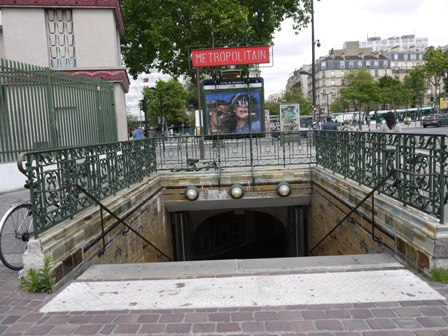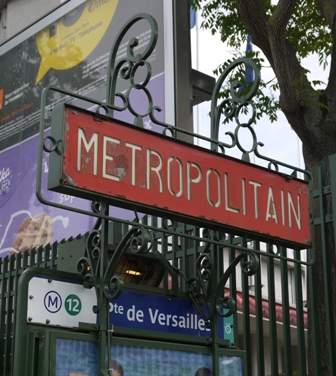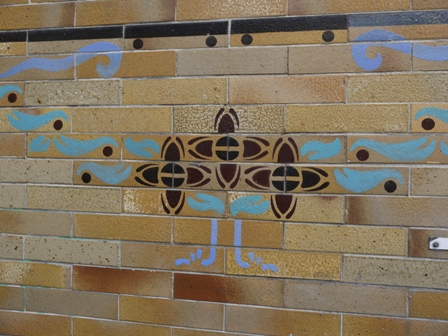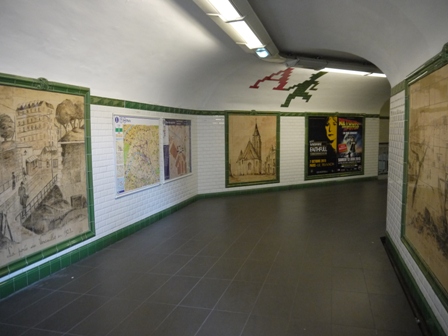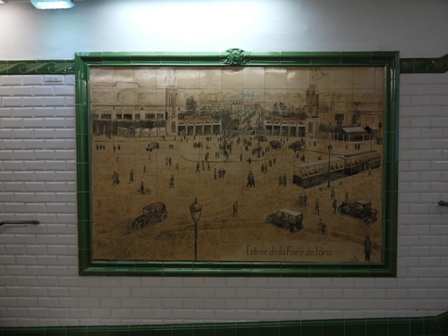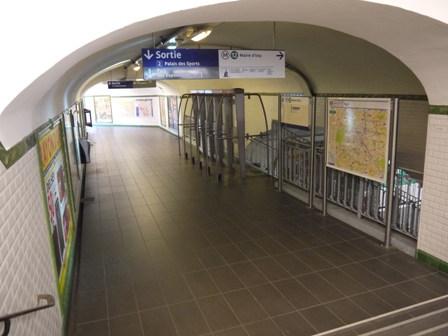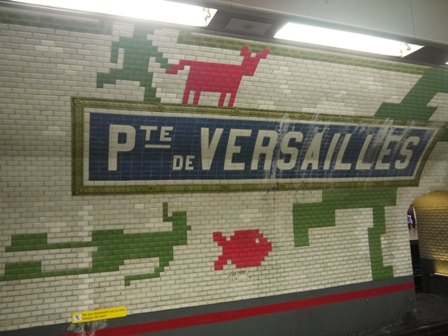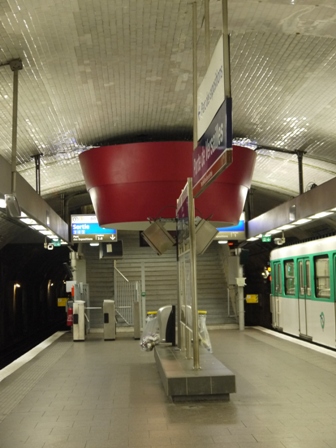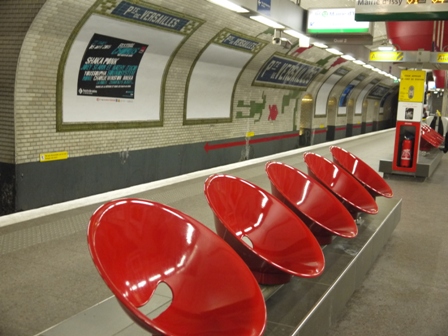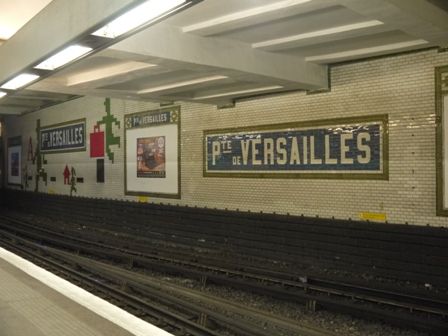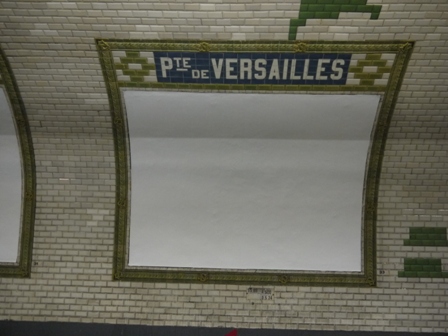The station opened on 5 November 1910.
Porte de Versailles is situated in the 15th arrondissement, close to the exhibition centre. It takes its name from the fortification of the former city wall around Paris.
It is served by the metro line 12 and connects with the tram lines T3A and T2.
The platforms have been replaced in the early 1930s when the line was extended to Mairie d'Issy.
The station has three platforms and the possibility to park a number of metros in the tunnels.
One of the entrances. It is surrounded by a green fence with swirly panels fixed on a low tiled wall.
Behind it is a station panel with rounded corners in a green metal frame.
Inside it are an advertising poster on one side and a map of the metro system on the other.
A very thick white area with raised circles has been put in front of the stairs.
Handrails are fixed on the left and right walls.
Three small round white lights in green casings have been placed on the backwall at ground level.
A large, rectangular red sign in a green metal frame hangs from two green curved poles. Parts have been removed from the red to reveal the word METROPOLITAIN in white letters.
Behind it is a station panel with rounded corners in a green metal frame.
Inside it are an advertising poster on one side and a map of the metro system on the other.
The walls of the entrance are tiled with light brown long rectangular tiles.
A pattern three brown flowers, light blue swirls and small dark brown circles has been stencilled on them.
In the corridor are several green ceramic frames with drawings of the area on light brown ceramic tiles of an earlier era.
The top of the frames are linked with green border tiles with patterned waves.
The floor is tiled in large rectangular brown tiles.
The green ceramic frame is made of curved tiles. On the top centre is a tile with the Nord-Sud logo - the letters N and S intertwined with a ribbon.
Inside the frame is a painted scene of front of the Foire de Paris during the 1920s in brown tones on standard square tiles.
The walls are tiled with white rectangular tiles with a raised centre.
The mezzanine floor over the tracks.
Next to the map of the network are the stairs down towards Mairie d'Issy. Further along are the metal exit doors leading from the other platform (direction Paris).
The signage is very large. The name of the station is stencilled in capitals on rectangular, flat blue tiles. The inner frame is made of plain white ceramic tiles.
The outer frame is made of green ceramic tiles with an olive branch pattern and Nord-Sud logos.
On the wall are painted tiles showing some of the exhibitions taking place close by during the year: a man and a cow - the agricultural show, a man snorkling - the holiday exhibition.
The vaulted ceiling is tiled. The floor is tiled in brown tiles.
The red cylinder can serve both as lighting and a projector.
Occasionally small exhibitions of rolling stock are brought here and their history is shown there.
Exit to the exhibition centre and the T3. Additional signage in the centre with the station name in upper and lower case.
The lights are in two stainless steel box running along the edges of the platform.
Red metal, half-bowl seats with a smiley slit have been placed on a grey base in the centre of the platform.
Metros towards Issy-les-Moulineaux sometimes stop here and passengers are required to take the next metro on the facing platform.
The ceiling of this platform is supported by steel beams. It is painted white.
The walls are straight to the ceiling.
The edge of the platform is marked in white. About 40 cm from the edge, a wider strip of tiles with raised circles can be found.
The advertising boards are fairly square. They have a frame of green tiles with a pattern of olive branches and the North-South logo.
The name of the station printed on blue tiles and two patterns have been integrated in the frame.
The walls are straight until about two-thirds of the panel, then both curve.

